In addition to the revered temples in Nepal, it is a land of breathtaking sceneries and deep spiritualism. The Nepal temples, spread across the country, indicate the rich history and deep religious past of Nepal in addition to spirituality, culture, and architectural beauty. From the ancient stupa of Swayambhunath to the magnificent Pashupatinath Temple, these hermitages offer something more to a visitor than just their religious importance; they present an experience that, like a cinematographic frame, will be truly etched in one’s memory as the soul of this culturally rich and worshipful nation.
Top 10 Temples In Nepal
Exploring the sacred sites of Nepal offers a deeply enriching experience. Here are some of the most important temples in Nepal:
1. Swayambhunath Stupa
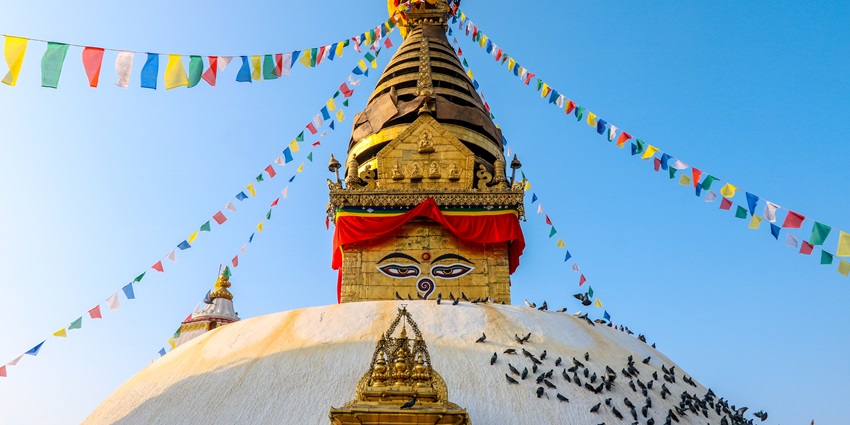
Photo: Nirmal Dulal / Wikimedia Commons
Perched atop a hill in Kathmandu, Swayambhunath Stupa, famously known as Monkey Temple, is one of the famous temples in Nepal that dates back to the 5th century. This UNESCO World Heritage Site features a grand stupa with a golden spire and a distinctive set of Buddha’s all-seeing eyes painted on its sides. The stupa is encircled by prayer flags that flutter in the breeze, adding a vibrant touch to the serene environment. The site is home to various shrines, monasteries, and statues, each contributing to its spiritual significance. The complex’s rich history and spiritual ambience make it a prominent pilgrimage and tourist destination.
Timings: 8 AM – 6 PM
Entry Fee: NPR 200 / ₹125 for foreigners
Suggested Read: Guide To Makalu Barun National Park
2. Pashupatinath Temple
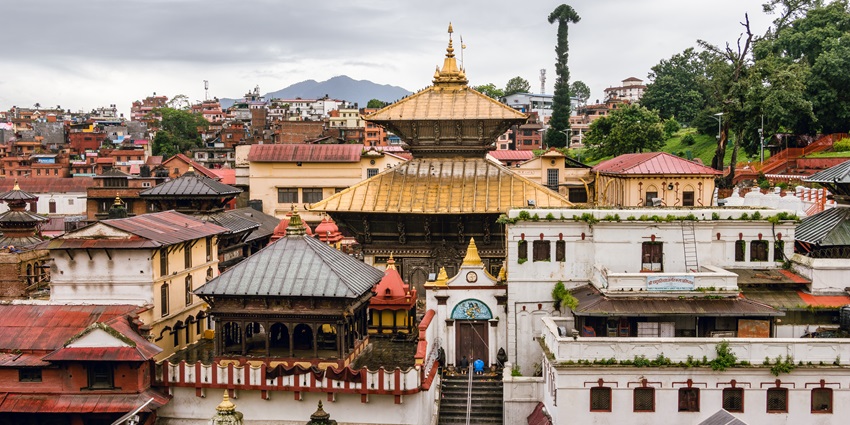
Photo: Bijay Chaurasia / Wikimedia Commons
Pashupatinath Temple, situated on the banks of the Bagmati River in Kathmandu, is one of the most holy temples in Nepal dedicated to Lord Shiva. This sacred site is renowned for its pagoda-style main temple, which houses a linga, a symbolic representation of Shiva. The temple complex, sprawling over 264 hectares, features numerous smaller shrines and temples, creating a vibrant spiritual atmosphere. The ghats along the river are used for traditional Hindu cremation rites, adding a unique cultural dimension to the site. During the Maha Shivaratri festival, the temple becomes a focal point for thousands of devotees, offering a colourful and spiritually charged experience.
Timings: 4 AM – 12 PM, 5 PM – 7 PM
Entry Fee: NPR 1000 / ₹630 for foreigners
3. Boudhanath Stupa
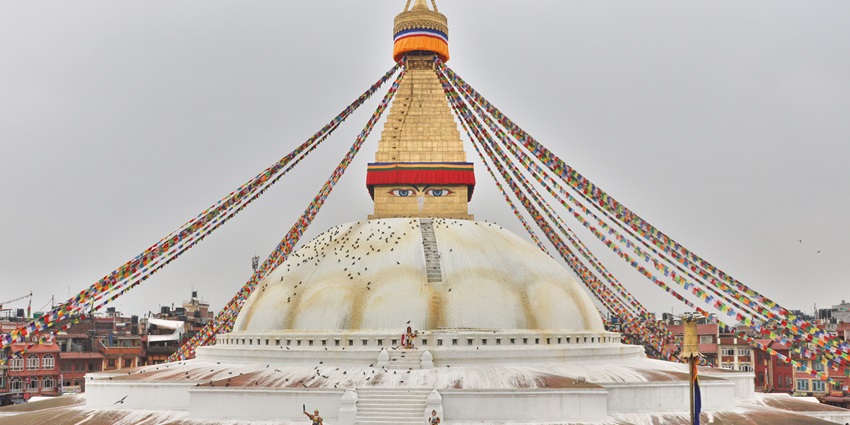
Photo: Nabin K. Sapkota / Wikimedia Commons
Boudhanath Stupa, located in the Kathmandu Valley, is one of the largest and most popular temples in Nepal. As a central hub for Tibetan Buddhism, it features a colossal mandala-shaped stupa adorned with vibrant prayer flags and the omnipresent eyes of Buddha. The stupa’s design, with its towering structure and surrounding circumambulation path, invites both pilgrims and visitors to walk around it as part of their spiritual practice. Its peaceful ambience, combined with the rich Tibetan traditions observed here, makes Boudhanath a must-visit site for those interested in Buddhist spirituality.
Timings: 6 AM – 7 PM
Entry Fee: NPR 400 / ₹252 for foreigners
Suggested Read: Guide To Royal Chitwan National Park Nepal
4. Lumbini
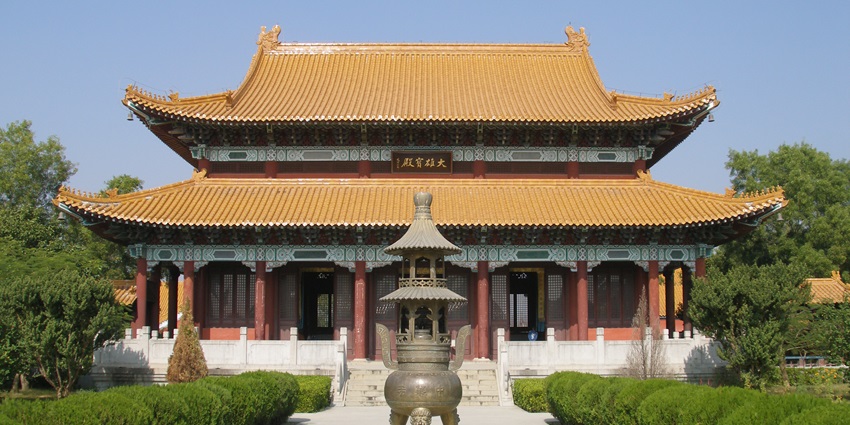
Photo: Vyacheslav Argenberg / Wikimedia Commons
Lumbini, located in the Rupandehi District, is a UNESCO World Heritage Site and the birthplace of Lord Buddha. The sacred garden’s main attraction is the Maya Devi Temple, which marks the exact spot where Siddhartha Gautama was born. This historical site is also home to the Ashoka Pillar, erected by Emperor Ashoka in 249 BC. The temple complex features ancient ruins, monastic zones, and various other shrines dedicated to Buddhist traditions. Lumbini offers a tranquil environment for reflection and meditation amidst its historical and archaeological significance. The site attracts thousands of Buddhist pilgrims and scholars from around the world.
Timings: 6AM – 6 PM
Entry Fee: NPR 500 / ₹315 for foreigners
5. Changunarayan Temple
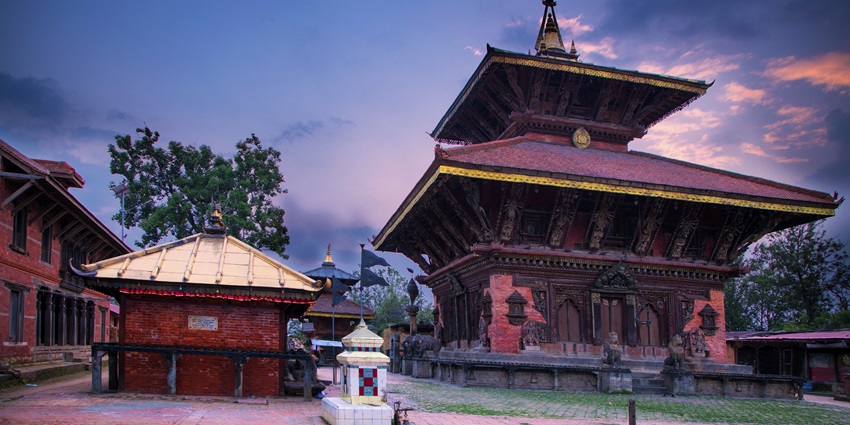
Photo: Mithun Kunwar / Wikimedia Commons
Changunarayan Temple, situated in Bhaktapur District, is one of Nepal’s oldest Hindu temples, believed to have been constructed in the 4th century. This temple, dedicated to Lord Vishnu, is renowned for its exquisite carvings and historical architecture. The temple’s pagoda-style structure is adorned with intricate sculptures depicting various deities and mythological scenes. Changunarayan is surrounded by a serene setting with lush greenery, offering a peaceful environment for worship and contemplation. The temple complex provides valuable insight into the evolution of Hindu temple architecture and art.
Timings: 6 AM – 6 PM
Entry Fee: NPR 1000 / ₹630 for foreigners
Suggested Read: Shiva Temples In Nepal For A Blissful Spiritual Experience
6. Sankhu Temple
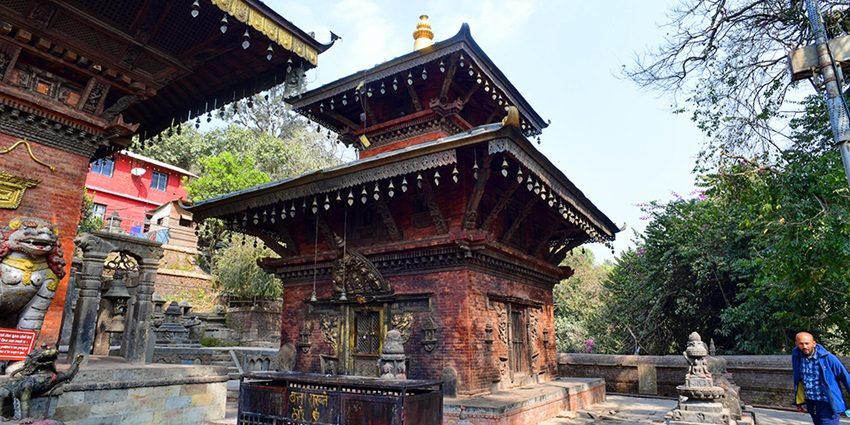
Photo: Rajesh Dhungana / Wikimedia Commons
Sankhu Temple, located in the Sankhu village near Kathmandu, is a revered Hindu shrine in Nepal dedicated to the goddess Vajrayogini. The temple is notable for its unique architectural style, featuring an intricately carved entrance and a sacred pond where pilgrims perform rituals. Sankhu Temple holds significant cultural and religious importance, reflecting traditional Nepalese religious practices. The surrounding village and its historical context add depth to the spiritual experience. The temple’s tranquil environment, combined with its rich cultural heritage, makes it a noteworthy destination for those interested in exploring traditional Nepalese customs and spiritual practices.
Timings: 6 AM – 6 PM
Entry Fee: Free
7. Manakamana Temple
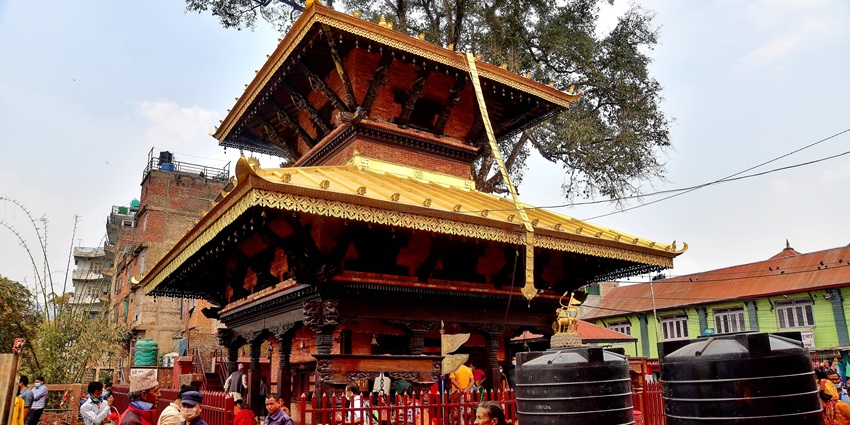
Photo: Rajesh Dhungana / Wikimedia Commons
Manakamana Temple, situated in the Gorkha District, is dedicated to the goddess Bhagwati, who is believed to fulfil the wishes of her devotees. The temple is perched on a hilltop and is accessible via a scenic cable car ride that offers stunning views of the surrounding landscape. The temple complex includes the main shrine and several smaller temples, all set amidst a picturesque backdrop. Known for its vibrant festivals and spiritual atmosphere, Manakamana Temple attracts both pilgrims seeking blessings and tourists who appreciate the scenic beauty.
Timings: 5 AM – 5 PM
Entry Fee: NPR 100 / ₹63 for foreigners
Suggested Read: Nepal Nightlife For Singles
8. Halesi Mahadev Temple
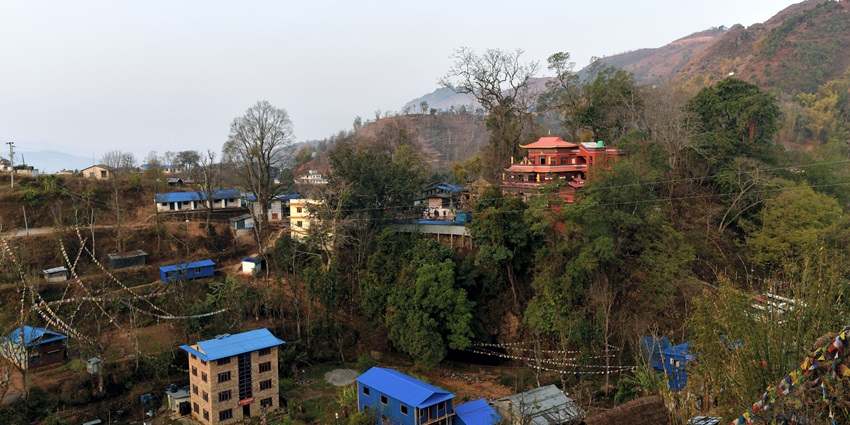
Photo: Christopher J. Fynn / Wikimedia Commons / Image For Representation Only
Halesi Mahadev Temple, located in Khotang District, is a revered Hindu shrine dedicated to Lord Shiva. Situated within a cave, the temple offers a mystical pilgrimage experience. The cave temple, surrounded by lush greenery, adds to the site’s natural beauty and spiritual significance. Pilgrims visit Halesi Mahadev for its serene environment and its role as a centre for spiritual practice and cultural festivities. The temple’s unique setting and its association with various local legends contribute to its importance in the Hindu religious landscape. It is a significant site for those seeking both spiritual solace and an immersive cultural experience.
Timings: 6 AM – 6 PM
Entry Fee: Free
9. Swargadwari Temple
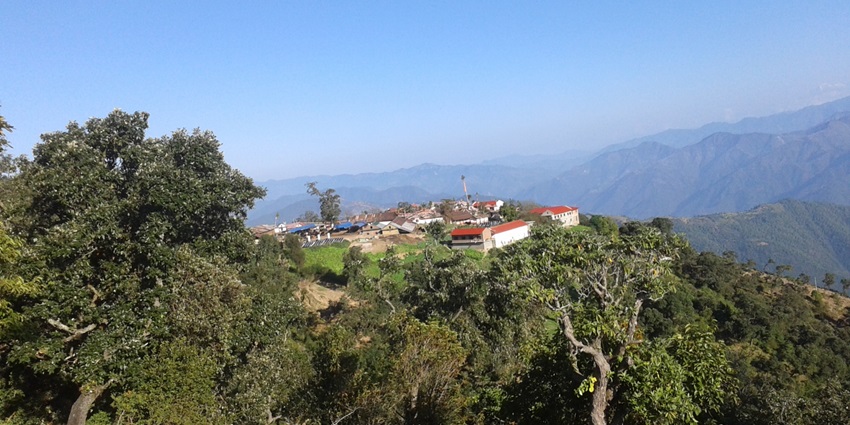
Photo: Bishal Budhathoki / Wikimedia Commons
Swargadwari Temple, situated in Pyuthan District, is one of the important temples in Nepal, dedicated to Lord Shiva. The temple is located on a hilltop, offering panoramic views of the surrounding hills and valleys. It is associated with various local legends, including the belief that it is a gateway to heaven, hence its name, which means “Gateway to Heaven.” The peaceful setting and the temple’s scenic location make it a popular retreat for devotees seeking spiritual solace and natural beauty. The site is also known for its serene atmosphere and its significance in local religious and cultural practices.
Timings: 6 AM – 6 PM
Entry Fee: Free
Suggested Read: Chitwan Jungle Safari
10. Janakpur Temple
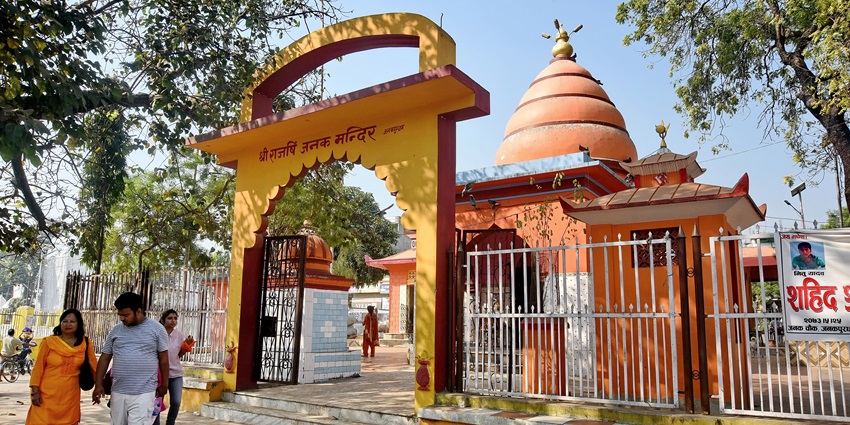
Photo: Rajesh Dhungana / Wikimedia Commons
Janakpur Temple, located in Janakpur District, is dedicated to the goddess Sita, the wife of Lord Rama. The temple is renowned for its elaborate and vibrant architecture, featuring intricate carvings and expansive courtyards. It is a central site during the Ram Navami festival, drawing large crowds of devotees and tourists who come to celebrate and pay their respects. The temple’s rich cultural heritage and its role in the Ramayana epic make it a significant religious and historical site. Its architectural beauty and the lively festivals held here offer visitors a unique glimpse into the region’s cultural and spiritual traditions.
Timings: 6 AM – 6 PM
Entry Fee: Free
The temples in Nepal are not only places of worship but also custodians of the country’s rich history and culture. Each temple offers a unique experience, blending spirituality with historical and architectural significance. Visiting these sacred sites provides a profound insight into Nepal’s religious traditions and artistic heritage. Discover exclusive travel packages and cultural tours for your Nepal trip on TripXL.
Cover Photo: Vyacheslav Argenberg / Wikimedia Commons


 WhatsApp
WhatsApp
 Twitter
Twitter









